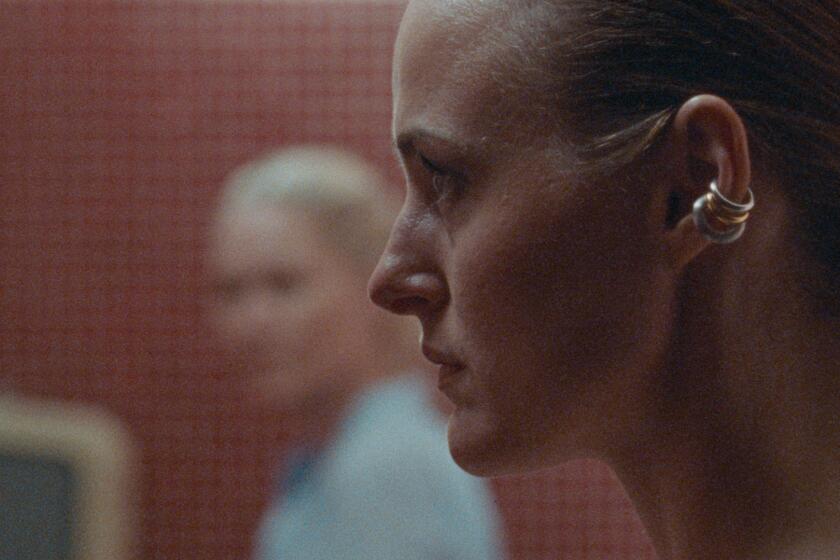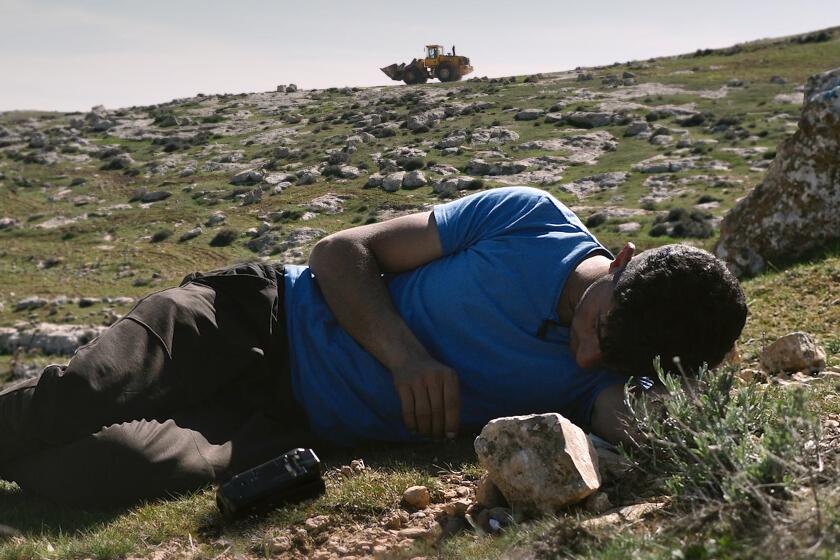‘Walter Mitty’s’ visual effects chief shares screen secrets
- Share via
It took 13 visual-effects companies to keep pace with the outsized imagination of Walter Mitty, the hero of the film based on the 1939 short story by James Thurber. Starring and directed by Ben Stiller, the latest silver-screen adaptation, scheduled for a Dec. 25 release, imagines Mitty as a Life magazine photo editor who trades in daydreams (involving superhero-style fights and a clever Benjamin Button aging scene) for real-life adventures amid stunning vistas in Iceland, Afghanistan and the Himalayas when the cover photo negative for the magazine’s final issue goes missing. Visual effects supervisor Guillaume Rocheron walks us through some of the complexities of the film, which costars Sean Penn, Kristen Wiig and Shirley MacLaine.
How would you describe the overall look of the film’s visual effects?
Very naturalistic. Basically, what happens to Walter during the film is he’s not going to a different world on an unknown planet or anything like this. He discovers how beautiful the whole world can be and opens himself to it and dreams about it and then goes on that adventure. And he works for Life magazine, and Life magazine has those photographs, the most striking photographs of our world that you can take. It’s all about beautifying the world we live in. And sometimes you push it a little bit too far, and it looks very much like fantasy or science fiction, and you try to bring it back a little bit. So you just always walk on that edge of beautified reality.
How did you achieve that look?
The approach on “Mitty” was not to hide behind any sense of grittiness. It just needs to be beautiful-looking. Everything is crisp, in frame and slow, so you have time to stare at it and appreciate how the images translate onto the screen. So it’s an interesting approach, because it’s very counter-trend in terms of what most films do nowadays, which is camera shake and flares and things to dirty things up a little bit. [It] obviously brings a lot more scrutiny to everything you show.
How do you bring that naturalistic sensibility to superhero-style fantasy sequences, such as when Walter does battle with his arch-nemesis shredding on skateboards through the streets of Manhattan?
That’s actually one of the only sequences that we pushed a bit beyond what is realistic because it was something that is closer to a comic book character. It was an interesting balance because it was really trying to sell that they’re really powering through the concrete, almost like when you see snowboarders in very powdery snow. We did a lot of practical photography on this, but we could not blow up the streets of Manhattan. So we replaced all the ground and we added all the skateboards and simulated the ground carving. And there were some movements that were just too dynamic or too superhero-like, so that’s why we used a lot of digital doubles on this.
VIDEO: Highlights from the Envelope Screening Series
For Walter’s Benjamin Button fantasy, did you use the same technology that was used in that movie?
Not really. The Benjamin Button approach was to go with a completely digital face. The way we approached it was different because there are a few shots where you see Walter aging, and we did most of this with makeup. So we were shooting that, and then we would shoot another pass of the shots with a body double that was a child. And then what we did is we used the body of the child and used [Ben’s] face with the makeup and blended them together. And we had to manipulate the head, basically to change the size and some of the makeup effects.
I imagine there are also a lot of visual effects outside of the fantasy sequences.
At the end, when Walter is climbing up the Himalayas to look for Sean, every single shot is a visual effect. We didn’t go into the Himalayas. Same thing in Iceland — all the mountains that you see that are in the background and the skies and all these things, all that is completely digital.
Nobody would ever have a way of knowing one way or another.
Exactly. That’s the goal!
More to Read
Only good movies
Get the Indie Focus newsletter, Mark Olsen's weekly guide to the world of cinema.
You may occasionally receive promotional content from the Los Angeles Times.










